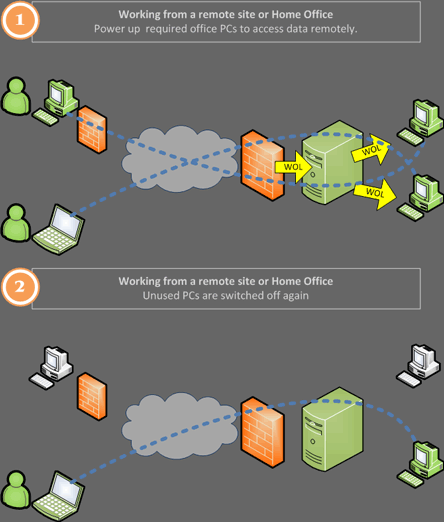
.jpg)
Lastly, although you shouldn't need to do this, a quick restart of the operating system after you've closed all of the Device Manager windows will help to make sure that everything is working properly. Not all network adapters will show this setting and it's probably the case that Ethernet adapters automatically support it, whereas Wi-Fi adapters need to be actively told to do so. You might also need to enable the Wake on Magic Packet option in the Advanced tab.

If the PC is connected through Wi-Fi, then do the same as above but for the wireless adapter - however, where almost every Ethernet adapter supports WOL, not all wireless adapters offer Wake-on-Wireless-Lan support. Select Properties and then Power Management - check all of the options you can see here. Head to the Network adapters section and right-click on the Ethernet one (ignore any that says WAN in the name). Press the Windows key + X or right-click the Start menu icon - select Device Manager from the list. With the motherboard now configured, you have to do the same in Windows. If you're not sure, check the manufacturer's website and look for WoL support in the specifications. Unfortunately, not all computers have a BIOS with comprehensive options like this - cheap pre-builds for office work or basic laptops often provide the bare minimum of things you can change. Here, enabling the "Power On By PCI-E" option lets the Ethernet controller turn on the PC when it receives the right command over the network. The exact location of the setting will depend on the brand and model of the motherboard used - below are screenshots from an Asus Z390-Plus Gaming.įor this particular product, we go to Advanced Mode, then Advanced, and finally the APM Configuration section. Switch on or restart the computer you want to remotely enable, and enter the BIOS by pressing the Delete or F2 key (press it lots of times!). To switch on/wake up any PC that's on your network, the first thing you need to do is activate the Wake-on-LAN option in the motherboard BIOS, assuming you're using onboard Ethernet or Wi-Fi adapter. It is possible to wake computers from another network, using Wake-on-WAN, but that's a bit more complicated - we'll look at that later in the guide. This guide was built around Windows PCs connected to the same network, via Ethernet or Wi-Fi. So if you have several machines on your network but don't use them all the time, you can keep them asleep or hibernating and use Wake-on-LAN to remotely power them up when required.Īnd although WoL can't switch them off once you've finished with the machine, most OS let you set a timer to put them back into Sleep mode after a period of inactivity. Network adapters originally needed a cable from the card to use Wake-on-LAN (bottom right). Fortunately, the makers of Ethernet and Wi-Fi adapters have worked around these issues, and ensure that most of their products retain enough power to accept a WoL command in Windows, macOS, and plenty of Linux distributions.
REMOTE WAKE UP PC OVER WIRELESS WINDOWS 8
Windows 7 doesn't support it officially and if you have fast startup enabled in Windows 8 and 10, that can potentially cause problems, too. When a computer is in a low-power state, it can be powered back up if the Ethernet adapter receives a "magic packet." This is a tiny block of data, broadcast across the whole network, that contains a 'wake up' instruction for a specific machine.įor a computer to react to this command, its network adapter and installed operating system must support WoL. One outcome of their combined efforts was an Ethernet standard called Wake-on-LAN (WoL). IBM and Intel collaborated on a project back in the mid-1990s to improve the way that computers on networks could be remotely managed. If this sounds of interest to you, then read on to learn how you can set up your Windows PC to use Wake-on-LAN, with our handy step-by-step guide. Setting up Wake-on-LAN is perfect for that scenario - with this technology, you can instantly power up another computer from the comfort of your chair. Do you have several PCs at home, all connected to the same network? Let's say you want to access one that's currently switched off, but don't want the hassle of heading for it just to switch it on.


 0 kommentar(er)
0 kommentar(er)
